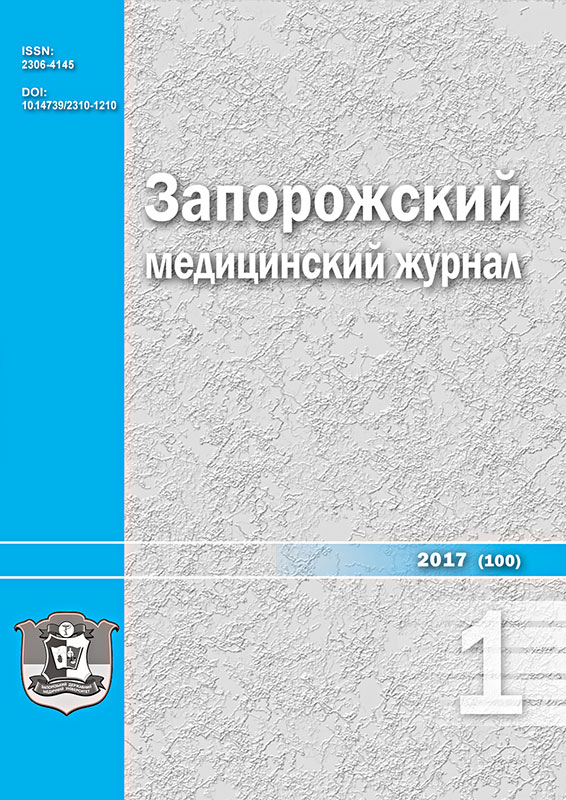Antimicrobial activity of new 5-(furan-2-yl)-4-amino-1,2,4-triazole-3-thiol derivatives
DOI:
https://doi.org/10.14739/2310-1210.2017.1.91735Keywords:
1, 2, 4-triazole substituted, antimicrobial activity, «structure–action» correlationAbstract
The aim of this research was to investigate the antimicrobial activity of some new 5-(furan-2-yl)-4-amino-1,2,4-triazole-3-thiol substituents and in some cases to trace the relationship between activity of compounds and their structure.
Research materials and methods. Antimicrobial activity of new 5-(furan-2-yl)-4-amino-1,2,4-triazole-3-thiol derivatives was studied by the method of serial dilutions. The primary antimicrobial activity screening tests of some 5-(furan-2-yl)-4-amino-1,2,4-triazole-3-thiol derivatives have been conducted on standard test cultures of both gram-positive and gram-negative bacteria that belong to clinically significant group of infectious agents with different morphological properties. Staphylococcus aureus ATCC 25923, Escherichia coli ATCC 25922, Pseudomonas aeruginosa ATCC 27853 were taken as the set of standard test strains.
Results and their discussion. The most sensitive strain was a strain of S. aureus ATCC 25923. Extension of alkyl substituents by the Sulfur atom does not lead to gradual changes in activity but the introduction of pentyl radical increases the activity of a molecule in two times. The transition from the S-alkyl derivatives of 5-(furan-2-yl)-4-amino-1,2,4-triazole-3-thiol to 2-((5-(furan-2-yl)-4-amino-1,2,4-triazole-3-yl)-thio)acetic acid esters doesn’t lead to radical changes of antimicrobial activity and is not drawn. But the introduction of isopropyl and isobutyl radicals in the ester structure of these molecules leads to a sharp increase in activity towards S. aureus ATCC 25923.
Conclusions. We have explored antimicrobial activity of new 5-(furan-2-yl)-4-amino-1,2,4-triazole-3-thiol alkyl derivatives and 2-((5-(furan-2-yl)-4-amino-1,2,4-triazole-3-yl)thio)acetic acid esters. It was found that all ten compounds exhibit moderate activity. Some influence of studied substituents on the antimicrobial activity results was also found.
References
Safonov, A. A., Panasenko, O. I, Knysh, Ye. G. (2015) Doslidzhennia analhetychnoi aktyvnosti 4-((R-iden)amino)-5-(tiofen-2-ilmetyl)-4H-1,2,4-tryazol-3-tioliv [Research of analgesic activity 4-((r-idene)amino)-5-(thiophen-2-ilmethyl)-4h-1,2,4-triazole-3-thiols]. Ukrainskyi biofarmatsevtychnyi zhurnal, 4, 23–25. [in Ukrainian].
Safonov, A. A., Panasenko, O. I., Knysh, Ye. G., & Samura, T. O. (2015) Syntez i fizykokhimichni vlastyvosti 2-(4-(R-amino)-5-(tiofen-2-ilmetyl)-4N-1,2,4-triazol-3-il)tioatsetatnykh kyslot [Synthesis and physico-chemical properties 2-(4-(R-amino)-5-(thiofen-2-ylmethyl)-4Н-1,2,4-triazole-3-yl)]. Odeskyi medychnyi zhurnal, 4, 13–16. [in Ukrainian].
Safonov, A. A., Panasenko, T. V., Knysh, E. G., & Polishchuk, N. M. (2015) Protymikrobna ta protyhrybkova diia 4-((R-iden)amino)-5-(tiofen-2-ilmetyl)-4N-1,2,4-tryazol-3-tioliv [Antimicrobial and antifungal properties of 4-((r-iden)amino)-5-(thiophen-2-ylmethyl)-4h-1,2,4-triazole-3-thiol]. Farmatsevtychnyj zhurnal, 2, 96–100. [in Ukrainian].
Haihua, X., Pingliang, Li, Dongeai, G., Jinhui, Hu, Yuchao, C., & Wei, He. (2014) Synthesis and antibacterial activity evaluation of 2,6-bis(6-substituted-1,2,4-triazolo[3,4-b][1,3,4]thiadiazol-3-yl)pyridine derivatives. Medical Chemistry Research, 23(4), 1941–1949. doi: 10.1007/s00044-013-0790-2.
Sokmen, B. B., Gumrukcuoglu, N., Ugras, S., Sahin, H., Sagkal, Y., & Ugras, H. I. (2015) Synthesis, antibacterial, antiurease, and antioxidant activities of some new 1,2,4-triazole Schiff base and amine derivatives. Applied Biochemistry and Biotechnology, 175(2), 705–714. doi: 10.1007/s12010-014-1307-2.
Volianskyi, Yu. L., Hrytsenko, I. S., Shyrobokov, V. P. et al. (2004) Vyvchennia spetsyfichnoi aktyvnosti protymikrobnykh likarskykh zasobiv [Specific activity studying of antimicrobial drugs]. Kyiv. [in Ukrainian].
Downloads
How to Cite
Issue
Section
License
Authors who publish with this journal agree to the following terms:
Authors retain copyright and grant the journal right of first publication with the work simultaneously licensed under a Creative Commons Attribution License that allows others to share the work with an acknowledgement of the work's authorship and initial publication in this journal. 

